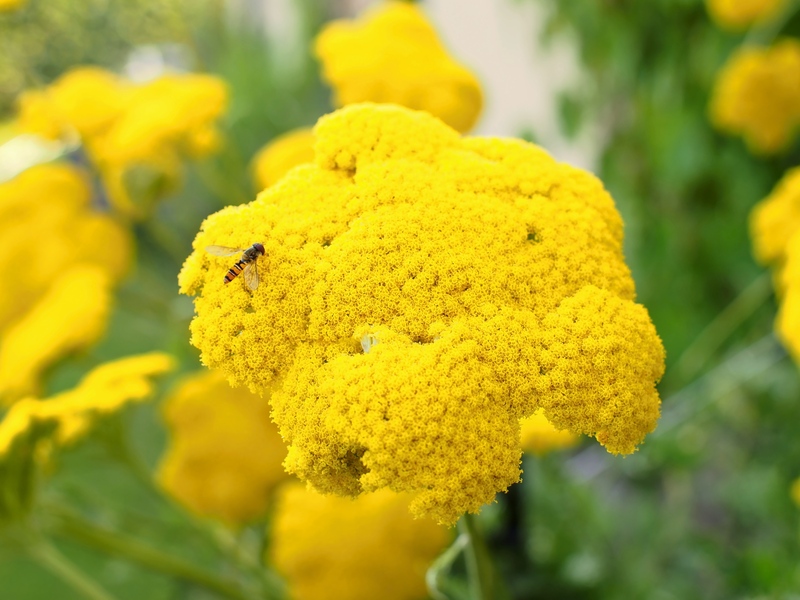Proven Tips for Minimizing Weed Presence
Posted on 09/06/2025
Proven Tips for Minimizing Weed Presence
If you're searching for effective strategies to achieve a lush, healthy garden or landscape, minimizing weed presence is essential. Weeds not only compete with your desired plants for sunlight, nutrients, and water, but they can also harbor pests and diseases. This comprehensive guide offers proven tips and actionable steps to help you reduce unwanted weeds and maintain an attractive, thriving outdoor space.

Understanding the Impact of Weeds
Weeds are more than just unsightly plants in your garden. Their impact can be broad and sometimes detrimental:
- Resource Competition: Weeds compete with your plants for nutrients, water, and sunlight.
- Pests and Disease: Weeds can host harmful pests and introduce diseases to your garden.
- Reduced Yield: For vegetable gardens and crops, weeds can lead to lower production.
- Increased Maintenance: Excess weeds increase the time and effort required for garden upkeep.
- Allergenic Effects: Certain weed species can even cause allergic reactions in humans and pets.
Minimizing weed intrusion is a smart investment in the health of your landscape or vegetable patch.
1. Start with Healthy Soil and Planning
Soil Preparation: The First Line of Defense
Healthy, fertile soil is less likely to harbor large populations of weeds. Begin your weed minimization journey here:
- Test and Amend: Regular soil testing detects nutrient deficiencies and helps you amend soil accordingly. Healthy, well-fed plants outcompete weeds.
- Proper Drainage: Ensure your garden soil drains well. Poor drainage creates weak spots where weeds thrive.
- Organic Matter: Add compost and organic matter to the soil. This not only feeds plants but supports beneficial microbial activity that suppresses weeds.
Garden Design with Weed Prevention in Mind
- Space Plants Correctly: Crowded planting can both inhibit desired plant growth and leave gaps where weeds flourish.
- Plant Densely: Fill beds efficiently -- dense plantings shade soil, making it difficult for weed seeds to germinate.
- Choose the Right Plants: Opt for robust, ground-covering species that outcompete weeds for light and nutrients.
2. Implement Mulching for Effective Weed Suppression
The Benefits of Mulch
One of the most effective weed control strategies is to use mulch around your garden beds:
- Smothers Weeds: Mulch acts as a physical barrier, making it difficult for weeds to emerge.
- Retains Moisture: Reducing evaporation means healthier plants and fewer opportunities for weeds to thrive.
- Regulates Temperature: Stable soil temperatures stress weeds attempting to germinate.
- Adds Organic Matter: As organic mulches break down, they enrich soil and improve structure.
Types of Mulch for Weed Control
- Organic Mulch: Wood chips, straw, grass clippings, shredded leaves, bark, and compost. Best for gardens, flower beds, and vegetable plots.
- Inorganic Mulch: Landscape fabric, black plastic, or stones. Useful for paths and permanent beds.
Tip: Apply a 2-4 inch layer of mulch, and be careful not to pile mulch directly against plant stems, as this can cause rot.
3. Stay Proactive: Remove Weeds Early and Regularly
The Importance of Timely Weed Removal
- Weed Before Seeding: Remove weeds before they have a chance to set seed, which can dramatically increase weed populations the following season.
- Frequent Walk-Throughs: Regularly inspect your garden for new weed growth, as young weeds are easier to eliminate.
- Hand Pulling: For smaller areas, hand pulling is effective, especially after rain when soil is moist.
- Hoeing and Cultivation: Use hoes or cultivation tools to uproot weeds, but avoid disturbing soil too deeply, which can bring buried weed seeds to the surface.
4. Smothering Weeds with Barriers
Landscape Fabrics and Sheet Mulching
- Landscape fabric: Acts as a semi-permanent barrier, allowing water through but preventing sunlight from reaching weed seeds.
- Sheet Mulching: Lay down sheets of newspaper, cardboard, or biodegradable paper and cover with mulch. This deprives weeds of light while improving soil as the materials break down.
- Plastic Covers: Especially helpful for new garden beds. Black plastic can solarize the soil, killing weeds and their seeds in heat.
Note: When using any barrier, ensure plants still receive adequate water and nutrients.
5. Water Smartly to Deter Weeds
Efficient Irrigation Techniques
- Drip Irrigation: Directs water to plant roots without wetting wide soil areas--discourages weed seed germination
- Soaker Hoses: Like drip lines, these deliver water directly to the desired plant bases
- Avoid Overwatering: Excess water can create ideal conditions for some weed types
Water only where it's needed to help your cultivated plants flourish and minimize weed emergence between rows and open soil.
6. Seed and Sod Selection for Weed-Free Lawns
Choose the Right Varieties
- High-Quality Grass Seed: Pick certified seed mixes that feature fast-germinating varieties, which get established before weeds can invade.
- Disease-Resistant Types: Tough, disease-resistant grasses and ground covers reduce vulnerability to weed pressures.
- Sod Installation: Invest in thick, healthy sod that leaves no gaps for weed seeds to sprout.
Proper Lawn Care
- Mow High: Maintain a mowing height of 2.5-3.5 inches--taller grass shades soil, making it harder for weed seeds to germinate.
- Fertilize Appropriately: Feed your lawn according to soil test recommendations to support vigorous turf that crowds out weeds.
- Overseed Thin Areas: Fill in bare spots before weeds take hold.
7. Employ Organic and Natural Weed Control Solutions
Safe Weed Inhibitors for Eco-Conscious Gardeners
- Vinegar-Based Sprays: Household vinegar or horticultural vinegar can kill small, young weeds on contact.
- Boiling Water: Pouring boiling water on cracks and between pavers kills weeds instantly.
- Corn Gluten Meal: This acts as a natural pre-emergent, inhibiting root formation in germinating weed seeds.
- Flame Weeding: Special flame tools quickly scorch small weeds -- ideal for pathways, but use with caution and only where fire risk is minimal.
- Hand Tools: Specialized weeders make uprooting tougher perennial weeds more effective.
These natural weed minimizing tips are safe for children, pets, and the environment.
8. Chemical Weed Control -- When and How to Use Responsibly
Herbicides as a Last Resort
For some gardeners, especially with large-scale infestations, judicious use of herbicides may be necessary:
- Selective Herbicides: Target specific types of weeds (for example, broadleaf or grassy weeds) without harming desired plants.
- Pre-emergent Herbicides: Prevent weed seeds from germinating in the first place; time application carefully according to label directions.
- Spot Treatments: Use only on persistent weeds. Avoid widespread spraying to protect pollinators and beneficial soil life.
Always follow label instructions, observe waiting periods before planting or harvesting, and wear proper safety equipment when using chemical products.
9. Practice Crop Rotation and Companion Planting
Integrated Strategies for Minimizing Weeds
- Crop Rotation: Changing plant families each year can reduce weed and pest buildup in vegetable beds.
- Cover Crops: Grow buckwheat, clover, or rye during off-seasons to smother weeds and improve soil.
- Companion Planting: Pairing certain vegetables and herbs together can suppress weed growth and boost harvests.

10. Know Your Enemy: Identify and Target Persistent Weeds
Weed Identification Is Key to Effective Management
- Annual vs. Perennial: Annual weeds grow and die in one season, while perennials return year after year from roots or rhizomes.
- Taproot Weeds: Dandelions and dock require deep digging to remove entire roots.
- Spreading Weeds: Creeping Charlie and bindweed expand via runners and must be controlled aggressively.
- Seed Dispersers: Purslane and crabgrass produce thousands of seeds--timely removal is essential.
Properly identifying weed types lets you choose the most appropriate suppression method and avoid spreading them further during removal.
Conclusion: A Holistic Approach to Weed Minimization
Minimizing weed presence is not about searching for a single magic solution--it's about integrating smart, sustainable practices throughout your gardening year. With these proven techniques to minimize weeds--from healthy soil and mulching, to proactive removal, smart watering, dense planting, and targeted controls--you'll build a gorgeous, productive, and low-maintenance landscape. Stay observant, adapt your strategies, and turn weed management into a manageable, routine part of your gardening success story.
Remember, consistency is key. The more dedicated you are to these proven weed reduction tips, the easier it will be to enjoy a weed-free, beautiful space all season long!

